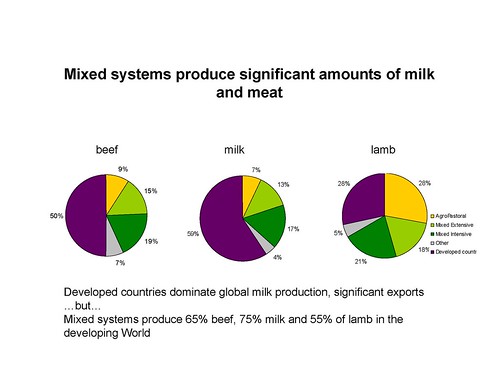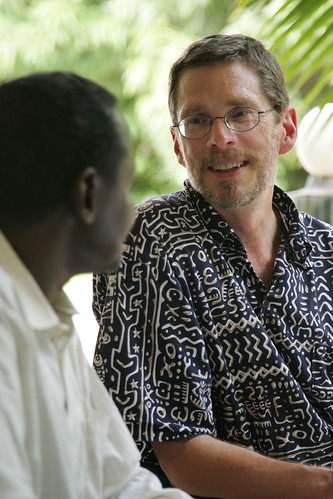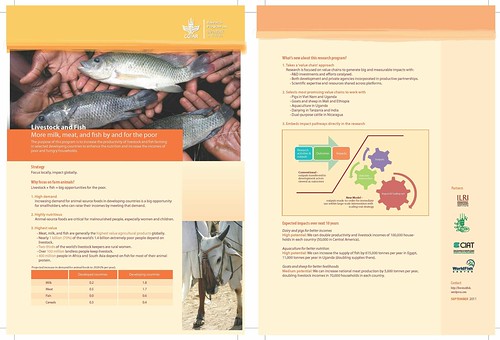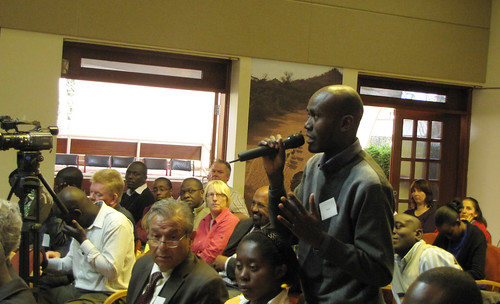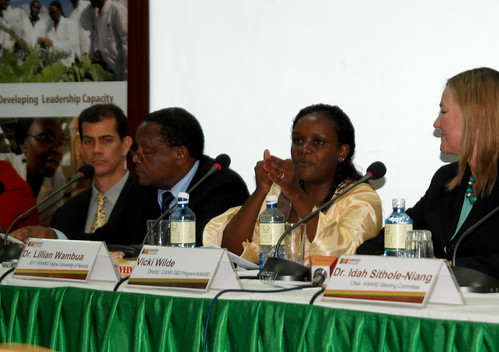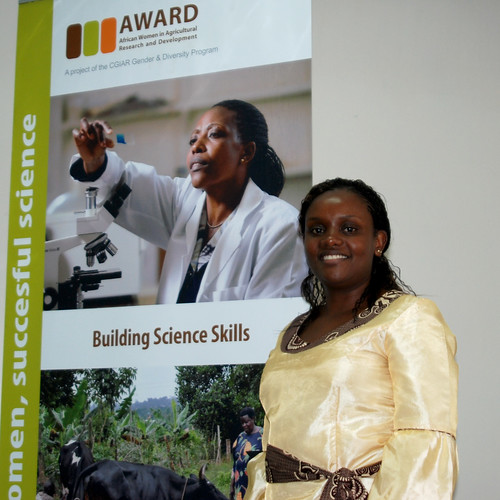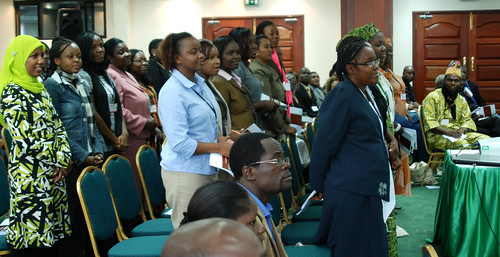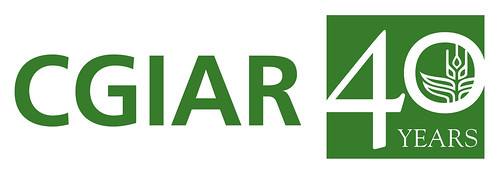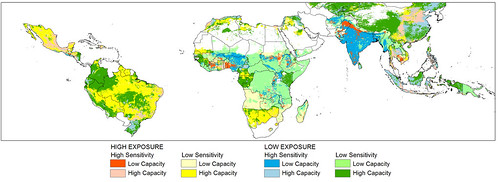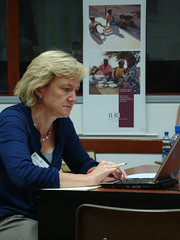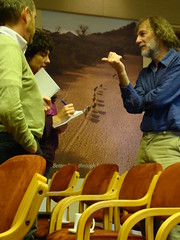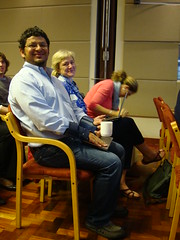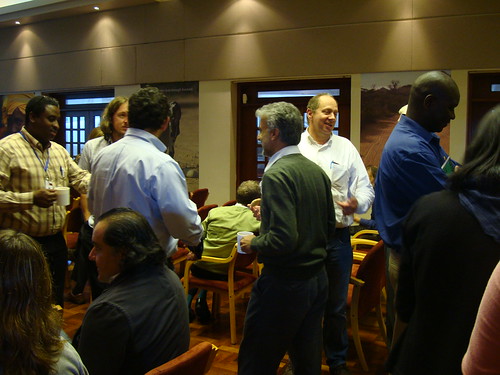Last week (13 Dec 2011), aid agencies that have funded Biosciences eastern and central Africa Hub (BecA Hub), a shared state-of-the-art research and capacity building platform hosted and managed by the International Livestock Research Institute (ILRI) for the region, convened an all-day meeting at ILRI’s Nairobi headquarters. The purpose of the meeting was to harmonize support being provided to BecA and African biosciences and to explore sustainable models for building on the momentum that BecA and its supporters have created.
BecA’s main donors and stakeholders represented at this meeting were the:
- Australian Agency for International Development (AusAID)
- Bill & Melinda Gates Foundation (BMGF)
- Canadian International Development Agency (CIDA, which funded BecA in its beginnings)
- New Partnership for Africa’s Development (NEPAD)
- Syngenta Foundation for Sustainable Agriculture.
This donor alignment meeting came appropriately on the heels of a recent first meeting of the CEOs of both NEPAD, a program of the Africa Union celebrating its tenth anniversary, and ILRI, one of 16 centres belonging to the Consultative Group on International Agricultural Research (CGIAR), now celebrating 40 years of operation.
NEPAD’s Luke Mumba, who participated in the meeting, brought warm greetings from his CEO, Ibrahim Assane Mayaki, who had paid a recent first visit to ILRI and BecA and reported that NEPAD views BecA ‘as strategically important for affordable and accessible biosciences.’
‘BecA and NEPAD have a common vision to improve livelihoods of the poor,’ Mayaki said. ‘And NEPAD is now interested to play a bigger role in BecA’s programs, helping it to have even greater impact.’
ILRI director general Jimmy Smith thanked Mumba for his message and then framed the ensuing discussion in a talk and slide presentation. The following are excerpts from his talk.
Opening remarks by ILRI’s Jimmy Smith
‘The idea for a Biosciences eastern and Central Africa platform started when I worked for CIDA. It is an initiative I’ve supported since its inception. And I’ve been thinking about BecA since before I rejoined ILRI this November.
‘I liked BecA’s business plan but thought it lacked the “demand side”. I discussed this with Syngenta’s Marco Ferroni, and told him that it’s possible that different donors have different expectations of BecA. I want these to be aligned so that I can fulfill on them.
‘I’d like to frame our discussions today by providing first a bit of context.
Up until 2008 we all believed that food came from supermarkets. Then the world food market went topsy turvy. Prices rose and 100 million people were sent into poverty. Because prices for food were good for some poor farmers, 40 million people also rose out of poverty.
‘Since then, people are once again raising the old Malthusian theory—that massive geometric population growth in the face of arithmetic food growth is bound to lead to great social upheavals.
Here’s what we’re facing. There’ll be 2.5 billion more people by mid-century. We’ll need 70% more food produced to feed the additional population. Specifically, for example, we’ll need 1 billion more tonnes of cereal grains by 2050 for food, feed and biofuels. Most of the additional food will have to come from land already farmed.
‘And we are not starting from zero. There are already 1 billion people in the world who are hungry!
‘75% of people who are poor live in rural areas, but they are at the receiving end of investments of only 4% of official development assistance for agriculture.
‘Donor support to agriculture has fallen from 1980 to 2009. The trendline is inching upwards, but very slowly—and it is not matching the need.
‘In Africa, food production has been increasing but it still lags behind population growth. Africa has been meeting its food needs largely from importation, US$14-billion-worth of cereals each year. This is not sustainable. The continent cannot continue to spend so much on food if it is also going to invest sufficiently in other sectors, such as health and education.
‘The Ford and Rockefeller foundations together financed research that led to the ‘Green Revolution’. This was a group of donors, around a table, with a big vision, which was transformative. My question is, will the creation of BecA be as transformative as that of the Ford and Rockefeller vision was in the sixties? I think it could be.
What are the opportunities for BecA?
‘Every expert who has studied the food situation has said our best possibilities lie in the biotech sciences. People see biotech as a new frontier that has helped us in the past and can continue to do so in the future. We can now do things faster and with more precision. Look how quickly genomes can now be mapped.
This opportunity could be seized and be transformative again. Think if we could produce maize as efficiently as sorghum. What would happen to the maize belt in Africa? Can we create plants whose photosynthesis is more efficient? Can the native African Boran cow produce as much milk as the exotic Jersey?
‘The facility to conduct such science is brought to Africa through the BecA Hub at a scale that could have great impact. It is also here at a size that can greatly help build biosciences capacity on the continent. BecA Hub capacity can leverage the expertise of ILRI and the other centres of the CGIAR. It can catalyze and add value to the agenda of the Comprehensive Africa Agriculture Development Programme.
‘Challenges and questions remain. Can we, for example, develop an explicit agenda setting process that CAADP members will own and invest in? Can we transform our funding base to do transformative science working with CADPP, NARS, universities? Can we put in place an accountability framework that inspires confidence in our donors and partners? Can we bring about more harmonious relationships internally?’
View the slide presentation Jimmy Smith made: The BecA-ILRI Hub: Realizing the promise, 13 Dec 2011.
View a presentation ‘BecA hub research, facilities, and capacity building‘ by Jagger Harvey, Appolinaire Djikeng, and Rob Skilton

